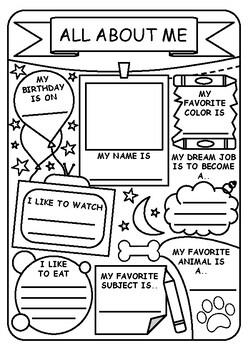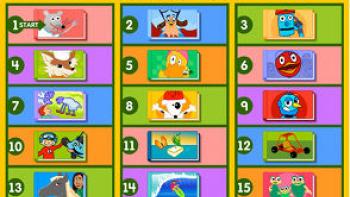
Social emotional learning activities help students develop a healthy perspective on themselves and others, making them better learners and citizens. These activities can have long-term positive effects that can be used to teach students in many settings. Teachers can create social emotional learning programs that benefit students in elementary, middle and high school. This will improve the classroom's overall environment.
Get to know your students to start your program. Watch their expressions and behavior. Learn about their relationships with each other and at home. You can begin to identify small cues, like facial expressions, which show that they need practice in social skills.
First, recognize the emotions that are common in the classroom. For example, sadness, anger, and confusion can pop up during class. Talk to your students about what they think those feelings mean and how they can deal with them. Ask them for a list of their most frequent feelings. Also, ask them to name the words they use.

Next, create an emoji table so that students can quickly recognize their emotions. It is also a good idea, to print out a number of cards. These cards include words and pictures that depict different emotions. Students can use the cards to track their moods by sticking them on their ring.
Role-play scenarios can be another option. In one example, let students create a face to represent one of their emotions. Find a friend they can feel connected to. This will allow them to explore the ways they feel about a particular color or character.
Twinkl offers social and emotional learning activities for those with digital resources such as a tablet, computer or laptop. There are many social and emotional tools available from Twinkl, all of which can be downloaded as PDF files. These worksheets can either be used as an instructional tool, or independently. Twinkl digital tools will allow you to teach social, emotional and communication skills to your students.
You can encourage your students to tell their stories while you are working with them. This will help students understand empathy and how it benefits the classroom. Storytelling is a great way to help your students develop vocabulary and comprehension skills.

Students can add these activities to their curriculum to help them build an emotional tower that will support academic success. Students can learn to manage their emotions and make healthy decisions. They also have the opportunity to build strong relationships with fellow classmates. You will increase academic productivity and improve the cultural environment in your classroom.
Students can learn empathy through random acts of kindness in the classroom. You can do this by having a daily check in or meeting with students. Giving kindness to others builds friendships both inside and outside the classroom. The students will also learn the importance of kindness and the positive effects it can have in the community.
FAQ
What are the factors to consider when choosing a major
The first step is to decide whether you prefer to enter a particular profession straight away or attend college. First, make a list about your interests and talents. It could be reading, listening, watching movies, talking with people, doing chores around the house, and other interests. Your talents can come from singing, dancing, drawing, painting, writing, sewing, cooking, woodworking, gardening, photography, carpentry, auto mechanics, plumbing, electrical wiring, computer programming, accounting, mathematics, chemistry, physics, engineering, medicine, dentistry, nursing, psychology, law, social work, teaching, etc. Once you have identified your interests and talents, you can use them as guides when selecting a major.
Art history and fine art might appeal to you if you are interested in becoming an artist. If you love animals, biology might appeal to you. You might consider pre-medicine or medical tech if you are interested in becoming a doctor. If you'd like a career that involves computers, you might check out computer science or computer networking. There are many possibilities. Just think carefully about what you'd like to do.
What's the point of education or schooling?
Education should help students develop skills necessary for employment. It is not just an academic pursuit but also a social activity where children learn from each other and gain confidence by participating in activities such as sports, music, and art. Learning to think creatively and critically is a key part of education. This allows students to be self-reliant, independent, and confident. What does it mean to have good educational standards?
Educational standards that promote student success are considered good. They give teachers a clear vision of the goals they want to achieve with their pupils. Educational standards should be flexible enough that schools can meet changing needs. They must also be fair and equitable so that every child has the chance to succeed regardless of their background.
What does it take to be a teacher early childhood?
You must first decide if you want to pursue a career in early childhood education. First, you need to obtain your bachelor's. In some states, students must have a masters degree.
You may also be required to attend classes during the summer. These courses cover topics such as pedagogy (the art of teaching) and curriculum development.
Many colleges offer associate degrees that can lead to teaching certificates.
While some schools offer certificates or bachelor's degrees in early childhood education, others only offer diplomas.
Additional training may not be necessary if you intend to teach at home.
Statistics
- Among STEM majors, that number is 83.5 percent. (bostonreview.net)
- Globally, in 2008, around 89% of children aged six to twelve were enrolled in primary education, and this proportion was rising. (en.wikipedia.org)
- “Children of homeowners are 116% more likely to graduate from college than children of renters of the same age, race, and income. (habitatbroward.org)
- Data from the Department of Education reveal that, among 2008 college graduates, 92.8 percent of humanities majors have voted at least once since finishing school. (bostonreview.net)
- They are more likely to graduate high school (25%) and finish college (116%). (habitatbroward.org)
External Links
How To
What is vocational training?
Vocational education is an educational program that prepares students to work after high school and college. It teaches them specific skills for specific jobs (such as welding). Vocational Education also offers apprenticeship programs that provide on-the-job training. Vocational education differs from general education because it focuses on preparing individuals for specific careers rather than learning broad knowledge for future use. Vocational training is not designed to prepare individuals for university but rather to assist them in finding jobs upon graduation.
Vocational education is available at all levels of education, including primary, secondary, high school, college, universities, technical institutes as well as trade schools, community colleges and junior colleges. There are many schools that specialize in specific subjects, such as nursing schools (law schools), medical schools, dental school, veterinary medicine and firefighting schools. Many of these schools provide both academic instruction as well as practical experience.
In recent decades, many countries have made large investments in vocational training. However, it is not clear if vocational education is effective. Some critics say it does not improve students' employability. Other argue that it prepares them well for life beyond school.
The U.S. Bureau of Labor Statistics has estimated that 47% of American adults hold a postsecondary certificate or degree related to their current occupation. This figure is higher among those with more education: 71% of workers aged 25-29 with a bachelor's degree or higher are currently employed in fields requiring postsecondary credentials.
According to the BLS, nearly half of America's adult population held at least one postsecondary credential in 2012. About one-third of Americans held a two-year associate degree, while about 10 percent held a four-year bachelor's degree. One fifth of Americans had a masters degree or doctorate.
For those with a bachelor’s degree, the median annual income was $50,000. This is compared to $23,800 if you don't have one. The median income for those with advanced degrees was $81,300.
The median wage for people who did not finish high school was only $15,000. The median annual income for those with less than a high-school diploma was $13,000